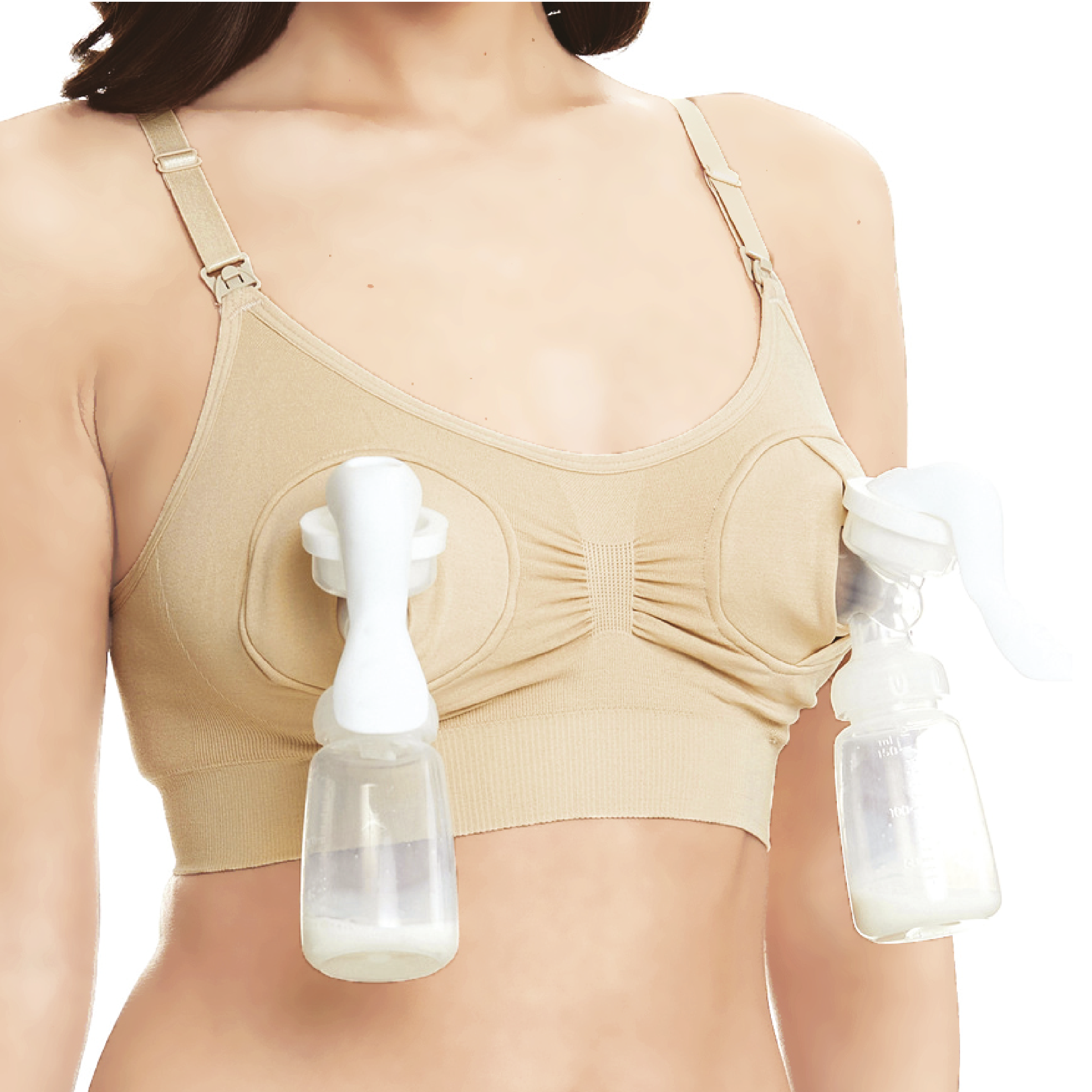The latest buzz in mom-related technology is a wearable breast pump—specifically, a boob-shaped bra insert that collects milk for you to store or bottle feed your baby. The goal is to make pumping more discreet (think: no more walking around with a massive breast pump hanging precariously from your bra) and manageable (you can tackle more of the never-ending to-do list while you pump).
These products have all of the same parts as a traditional electric or manual breast pump, but everything fits inside your bra. You can plug it in to charge and turn it on to begin pumping. When it’s time to stop, just empty the collection cups and re-charge the device. Some of these new devices also have an app that lets you track your pumping sessions.
The flange—the cone-shaped funnel that sits directly on your nipple when you’re pumping—is key to a comfortable and effective experience. If you find your pump is causing pain or not producing enough, it could be due to a poor flange fit. With most current wearables, you can’t see how the flange is fitting because it’s covered by the pump motor, so it can be trickier to spot problems.
If you do notice a problem, it’s important to speak with your lactation consultant to determine what might be causing the issue. They might recommend you switch out the flange for a different size or try to adjust your positioning while pumping. Getting it right can be tricky, but you’ll be glad you did the second your breasts aren’t hurting anymore during a pumping session.
Another drawback of a wearable pump is that the suction strength is typically much lower than a traditional wall or hospital-grade pump. For example, the Elvie Stride has a maximum suction strength of only 220 mmHg—far below the 270 mmHg that you can achieve on a Spectra S1 or Medela Symphony at their highest settings. While this may be fine for many moms, it’s something to keep in mind if you plan on exclusively using your wearable pump or will need to use it at work or other places that don’t allow for breaks.
Some wearable breast pumps are also not as easy to clean or assemble as a traditional pump, so be sure to take those considerations into account when shopping. You’ll want to consider how easy it is to remove and clean the flanges, the collection cups, and the motor. Also, if you’re planning on purchasing one of these devices, be sure to read the product reviews to see if others had trouble with assembly or if it was difficult to use.
Aside from the above, wearable breast pumps tend to be quieter and more compact than traditional pumps, which makes them a good option for moms who want to pump in public or while on the go. And since they’re a bit more pricey, it’s a good idea to talk to your lactation consultant and determine whether this type of device is right for you.

